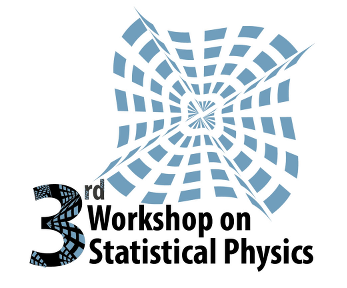Thermodynamics of Information
Juan Manuel R. Parrondo
Universidad Complutense de Madrid
Spain
1. A bit of history: Maxwell's demon, Szilard's engine, Bennett's solution.
2. Basic concepts: Shannon information, mutual information, relative entropy.
3. Heat, work, and non-equilibrium free energy.
4. Information and the second law.
5. Fluctuation theorems for feedback systems.
6. Reversibility: optimal Maxwell demons, optimal feedback.
7. Thermodynamic cost of measurement and erasure.
8. Creating information: symmetry breaking.
9. Maxwell demons in the phase space and microcanonical Szilard engines.
10. Information flows.
References:
1. H.S. Leff and A.F. Rex. Maxwell's demon 2: Entropy, classical and quantum Information, Computing (Institute of Physics, 2003).
2. J.M.R. Parrondo, J.M. Horowitz and T. Sagawa. Thermodynamics of information. Nature Physics 11, 131-139 (2015).
3. T. Sagawa and M. Ueda. Minimal Energy Cost for Thermodynamic Information Processing: Measurement and Information Erasure. Physical Review Letters 102, 250602 (2009).
4. J.M. Horowitz and S. Vaikuntanathan. Non-equilibrium detailed fluctuation theorem for repeated discrete feedback. Physical Review E 82, 061120 (2010)
5. J.M. Horowitz and J.M.R. Parrondo. Optimizing non-ergodic feedback engines. Acta Physica Polonica B 44, 803-814 (2013).
6. J.M. Horowitz, T. Sagawa and J.M.R. Parrondo. Imitating Chemical Motors with Optimal Information Motor. Physical Review Letters 111, 010602 (2013).
7. J.M.R. Parrondo. The Szilard engine revisited: Entropy, macroscopic randomness, and symmetry breaking phase transitions. Chaos 11 725-733 (2001).
8. É. Roldán, I.A. Martínez, J.M.R. Parrondo and D. Petrov. Universal features in the energetics of symmetry breaking. Nature Physics 10 457-461 (2014).
9. R. Marathe and J.M.R. Parrondo. Cooling classical particles with a microcanonical Szilard engine. Physical Review Letters 104, 245704 (2010).
10. J.M.R. Parrondo and L. Granger. Maxwell demons in phase space. European Physical Journal-Special Topics 224, 865-875 (2015).
11. J.M. Horowitz and M. Esposito. Thermodynamics with Continuous Information Flow. Physical Review X 4, 031015 (2014).
Material:
Abstract
Exercises
Notes
Slides
External Link (Course Material)
Exact Analysis of the 1D KPZ Equation and Discrete Models
Tomohiro Sasamoto
Tokyo Institute of Technology
Japan
The Kardar-Parisi-Zhang (KPZ) equation is a partial differential equation with noise for describing a motion of interface, and is considered to be one of the standard models in non-equilibrium statistical physics. Its fluctuations show universal scaling properties, which constitute the KPZ universality class.
Its one-dimensional version admits exact solutions. The height fluctuation scales as t^(1/3) for large time t and the exponent 1/3 had been confirmed by using Bethe ansatz. In 2000 its universal distribution function was identified and turned out to be related to random matrix theory. Since then there have been vast developments on the topic.
In the lectures we explain some basics of the KPZ equation and its exact solutions. We also discuss related discrete models, and connections to random matrix theory and integrable systems.
1. Random matrix theory and TASEP
After a short introduction to the topic, we explain the basics of random matrix theory and how the totally asymmetric simple exclusion process (TASEP) is related to it.
2. Exact solutions for the KPZ equation
We explain the issue of well-posedness of the KPZ equation and the exact solution of the one-point height distribution for the narrow wedge initial condition using replica method. We also discuss some generalizations.
3. ASEP, q-TASEP and Macdonald process
Behind the solvability of the KPZ equation lies the integrability.
We introduce the Macdonald process and show how they are related to discrete models such as the asymmetric simple exclusion process
(ASEP) and q-TASEP.
Structure, Dynamics and Emergence in Complex Networks
Jesús Gómez-Gardeñes
Universidad de Zaragoza
Spain
In this lecture we will cover the fundamentals of complex networks. This lecture is divided in three main parts. The first part is devoted to introduce the topic of network science motivating the main questions and results about the structural characterization of real complex systems. We will also introduce models for generating synthetic complex networks. In the second part we will cover the function of complex networks, paying special attention to two key collective phenomena that appear as a product of the microscopic interactions between nodes: Epidemics and Synchronization. We will show how the complex backbone of interactions (the network) can be incorporated into well-known mean field models, such as the SIS and SIR compartmental models for epidemics and the Kuramoto model for synchronization. Finally, in the third part, we will go beyond contact networks to accommodate real data about mobility patterns. To this aim, and focusing on contagion processes, we will introduce metapopulation modeling and tackle the analysis of epidemic outbreaks in populations of commuting agents.
Outline of the lecture:
PART I :
- Introduction to network science
- Characterization of network structure
- Models of networks
PART II :
- Dynamical processes on complex networks
- Spreading processes
- The heterogeneous mean field and microscopic approaches
- Synchronization dynamics in networks
- Explosive transitions in networks
PART III :
- Metapopulation models
- The Markovian formulation of metapopulation dynamics
- Multiplex complex networks
- Vector-borne diseases
Material:
Lecture1
Lecture2
Lecture3
Lecture4
Lecture5
Lecture6
External Link (Course Material)

